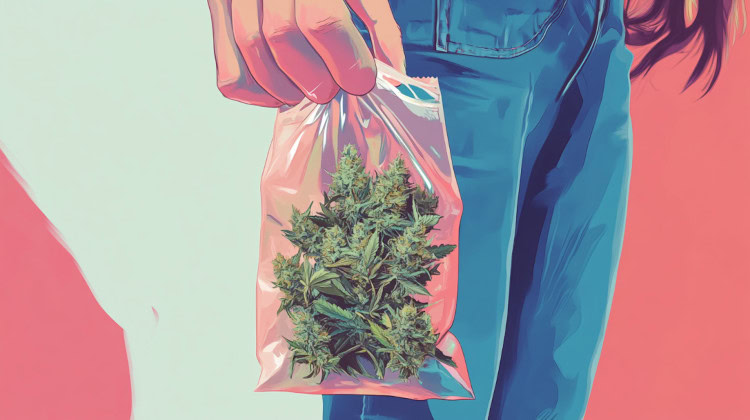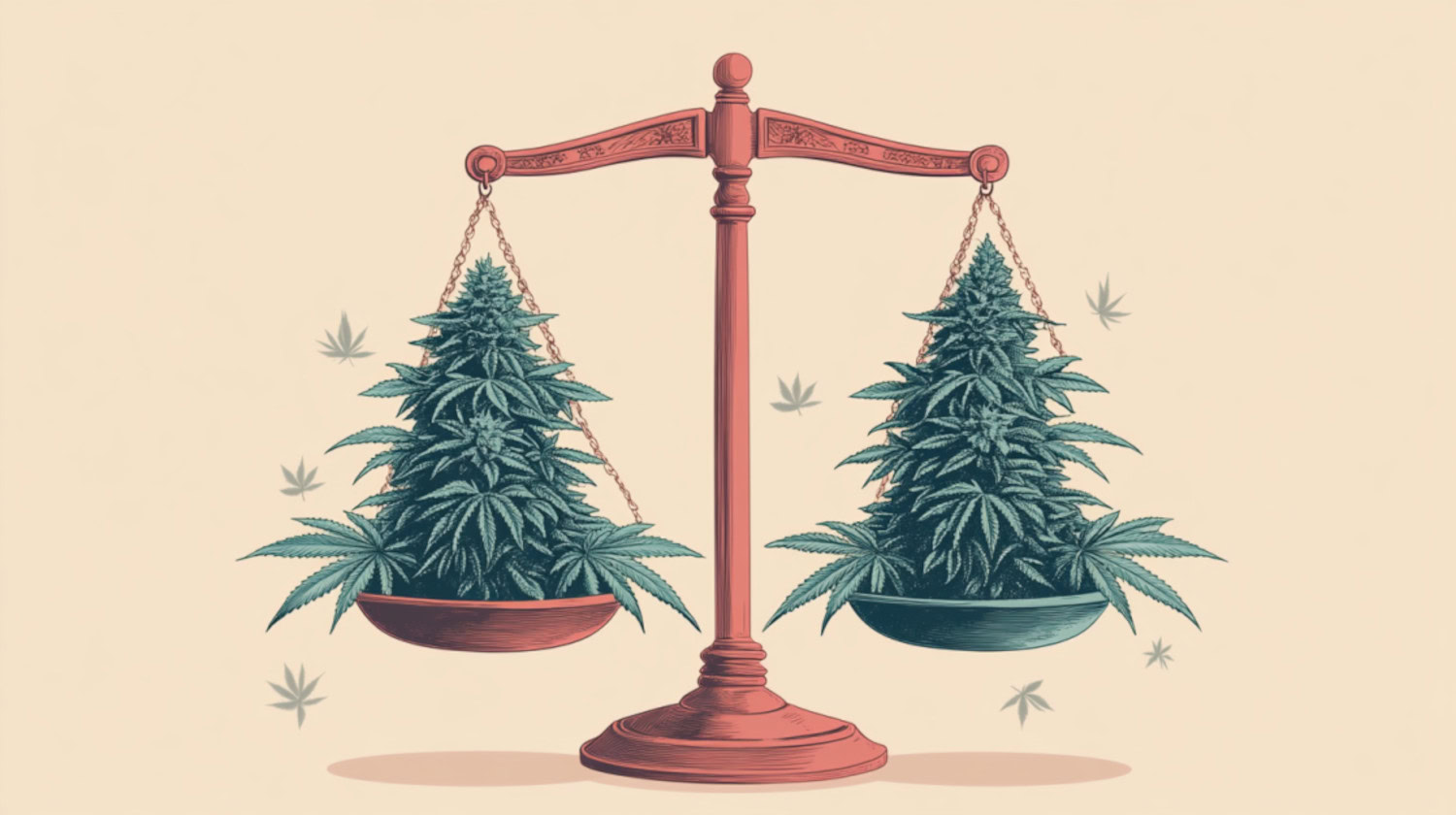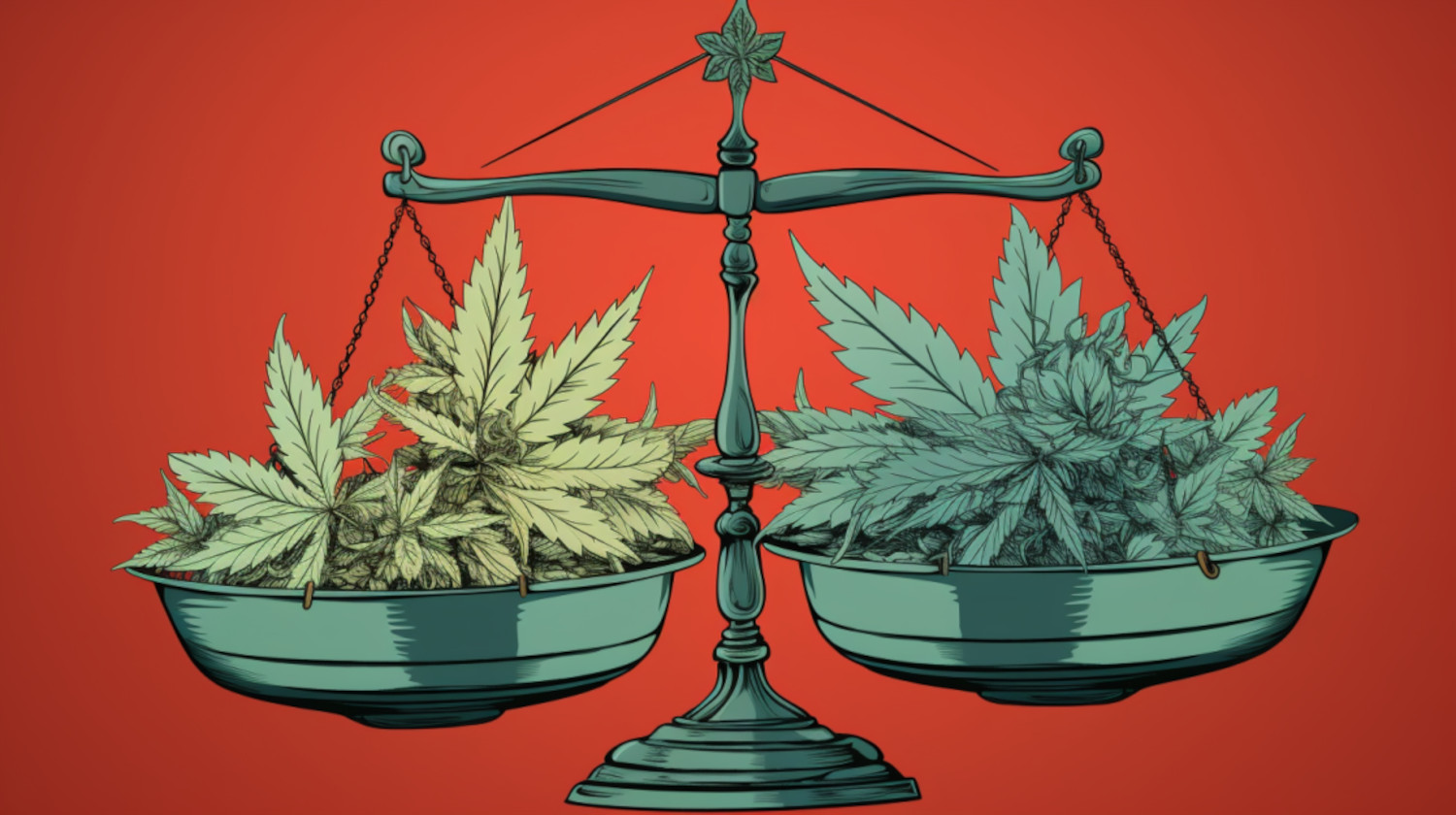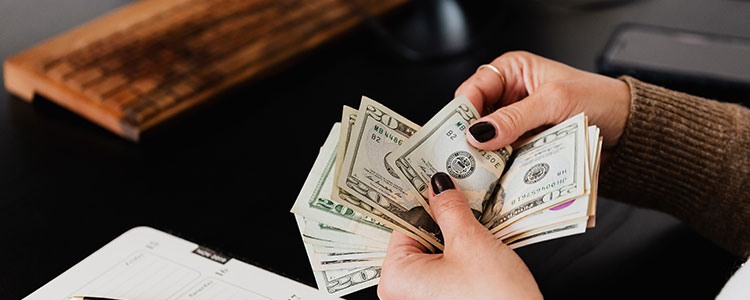Key Takeaways
- A zip of weed is a slang term for an ounce of cannabis.
- Cannabis measurements range from grams to pounds, with many slang terms used.
- The price of a zip varies based on quality, region, and many other factors.
Understanding the commonly used slang terms for cannabis measurements is incredibly helpful when buying flower. Phrases like "eighths," "quarters," and "zips" can be confusing if you’re unaware of what they mean.
To spot fair prices better, consumers would be wise to know how much bud comes in each weight increment, like a zip of weed. Prices of cannabis flower are determined mainly by weight but also fluctuate due to various factors like quality and grow practices. However, once basic weight measurements are understood, consumers can better navigate their options and make the most informed decision for their consumption needs.
How Much is in a Zip, and Where Does the Term Come From?
A zip is a slang term for an ounce of cannabis, which equals about 28 grams. While it may seem like a lot to some users, a zip is a typical order for consumers buying in bulk.
The term "zip" likely comes from Ziploc bags, which are often used to store weed. Like most slang, zip likely came about out of shorthand, the practice of shortening and simplifying words.
Today, in most cannabis dispensaries, a zip is referred to as an ounce. Sometimes, using terms like zip can be an unofficial metric that gauges how informed someone may be about cannabis. For many, including long-time consumers and underground operators, using the right slang demonstrates plant knowledge and community knowledge.
Beyond Zips: Cannabis Measurements and Slang Terms

From bits to massive buds, weed is sold in numerous quantities. A few standard amounts are used today, from smaller quantities like grams to more significant amounts, like zips and pounds.
Over time, some of these terms and their sizes have been phased out of usual cannabis pricing. Below is a gathering of common terms of the past few decades, both modern and older, that consumers may want to know:
- Nickel Bag: This is a largely phased-out measurement that was once a popular low-priced offering just a few decades ago. Named for its $5 per bag price, nickel bags can vary in size, but they most often contain a half gram or the amount needed for one bowl.
- Dime Bag: Similar to a Nickel Bag, quantities can vary with these now largely antiquated $10 bags. In most cases, buyers would get between a half and a whole gram.
- Gram: The smallest amount typically sold today, grams usually contain enough weed to roll one or two joints, depending on their nug structure. Many grams are sold for $20 a bag, so consumers often refer to grams as a ‘20 bag.’
- Eighth: One of the most popular amounts sold, an eighth equals 3.5 grams, totaling an eighth of an ounce. Lovers of pizza and fractions also use “slice” as slang for referencing an eighth.
- Quarter: A quarter ounce is 7 grams, often a perfect quantity for those who like to have a bit more bud on hand but not too much. Most consumers stick to ‘quarter’ when describing this size bag of weed, though names like “Quad” and “QP” are used in some circles.
- Half Ounce: As the name states, 14 grams amounts to half an ounce of weed. The full name is often used, though various terms, including "half zip” or “half,” are known to be used.
- Zip (Ounce): A zip, or ounce, amounts to 28 ounces of bud. Other popular slang terms for this size offering include an “O.”
- QWOP: A quarter pound of weed, not to be confused with a quarter bag.
- Pound: A pound, or 16 zips, equals 448 grams. Some slang for this size include “LB” or “elbow.”
Prices fluctuate due to various factors. To get the best value, consumers should know how much bud comes in a zip to better spot quality flower at fair prices.
How Much Does a Zip Cost?
Prices for zips and other quantities change depending on location, quality, and the source of the sale, including its legal status. When considering zip prices, consider the following factors:
- Location and Demand: Prices tend to be lower in states where weed is legal. Essentially, the greater the access to the plant, the less likely the cost should be. For example, states like California, Oregon, Michigan, and Colorado have lower prices because there's an abundance of cannabis on the market. In some cases, including Oregon, there may even be an oversupply of cannabis, with growers unable to move all their products unless it’s steeply discounted.
- Quality: The quality of cannabis can vary due to various factors. While not always true, in most cases, higher costs tend to correlate with how the flower is grown (indoor flower costs more to produce than sun-grown or greenhouse flower), how fresh it is (aging products tend to be discounted), and nug structure (full-size nugs are often higher priced than pre-ground flower).
- Legal Status: Taxes significantly raise the cost of cannabis in legal states. Licensed dispensaries must follow strict state rules, with many regulations leading to increased costs passed onto the consumer. Unlicensed sellers may charge a premium for the risk associated with selling and distributing illegal cannabis.
- Market Competition: Prices may be lower in large cities or markets with heavy competition. Some rural and smaller markets may also charge higher prices, but most tend to charge less as supply and demand differ from highly populated areas.
- Supply Chain Issues: Shortages in supply can affect the price of a zip, with shipping delays causing price increases. Typically, high demand or low supply times will lead to price spikes.
- Order Size: Buying a zip may prove to be a fiscally sound decision for some people, often saving consumers money and time. Like big-box retail stores, dispensaries sometimes offer discounts for bulk purchases.
Dispensary vs. Unlicensed Market Pricing

In states where cannabis is legal, a zip can go for anywhere between $100 and $300 or even more, depending on the quality of the bud, local taxes, and other factors.
Some components remain the same across the licensed and unlicensed market. High-quality, in-demand cultivars tend to cost more. A top pick in a primary cannabis-consuming market like Los Angeles might cost closer to $300 in many licensed dispensaries. On the other hand, a more basic or lower-quality cultivar from a smaller shop may be discounted at around $100 to $150 for a zip.
Prices can vary even more in states where cannabis is still illegal, increasing the risks involved in selling it. A zip can range from $180 to $400. Additionally, unlicensed sellers are more likely to change their prices more frequently based on demand, quality, and other fluctuating factors
Frequently Asked Questions
What Is a Zip of Weed?
A zip is slang for an ounce of cannabis, totaling 28 grams.
How Many Zips Are in a Pound?
There are 16 zips in a pound of weed. A zip is 28 grams, and a pound is 448 grams.
Why do zip prices vary so much?
Zips, like all cannabis quantities, are priced based on a number of factors, including but not necessarily limited to:
- Product Quality
- Location
- Market Competition
- Product Availability
- Legal Status
- Supply Chain Performance
- Order Size
- Grower Reputation
- Processor Reputation
- Cultivation Style
The information in this article and any included images or charts are for educational purposes only. This information is neither a substitute for, nor does it replace, professional legal advice or medical advice, diagnosis, or treatment. If you have any concerns or questions about laws, regulations, or your health, you should always consult with an attorney, physician or other licensed professional.




